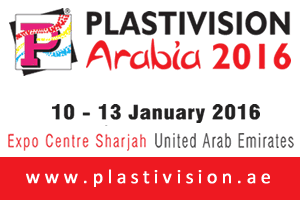Plastics are one of the greatest innovations of the millennium and in today's world, life without plastics is incomprehensible.
The plastic industry barely existed about fifty years ago. Now, plastics represent one of the most ubiquitous raw materials used in a wide gamut of industries ranging from construction, automotives, packaging, electrical & electronics, appliances to medical products.
The Middle East, during the last decade, has fast emerged as a serious player in the global market owing to the twin benefits of low raw material and feedstock prices and proximity to the highly lucrative Asian market.
Being a rapidly growing area, the Middle East offers an excellent opportunity for companies in this field. With huge volumes coming on line in the next few years, and the region becoming the focus of international polymer producers and converters, there is immense growth potential for the regional downstream plastics industry.
The cost advantage
Feedstock and logistics are the top two cost components of petrochemicals products wher the Gulf enjoys an advantage over Asia and Europe. First, feedstock cost is lower in the Gulf owing to its rich oil and gas reserves.
The rationale for the lower feedstock rates are that it is a natural by-product in upstream operations and hence involves minimal cost of production. This cheap and assured supply provides a significant competitive advantage to the Gulf players vis-à-vis their global competitors who procure feedstock at market rates.
Secondly, the GCC’s closeness to demand clusters – specifically India and China – offers a significant logistic cost advantage.
These cost advantages, coupled with increasing environmental regulation of petrochemicals companies in the west and rising margin pressure globally, offer a congenial environment for petrochemicals industry growth in the Gulf.
Figuring it out
The Middle East plastics industry is expected to record an annual growth of 30 per cent over the next five years, which is regarded as the fastest rate of growth in the world
Annual petrochemicals and plastics production of the Gulf states is expected to jump around 46 per cent to 155 million tonnes per annum by 2015, up from 105 million now, attracting investments to the tune of US$ 55 billion
The UAE currently produces 3.4 million tonnes of petrochemicals and plastics annually, which is expected to more than double to 7.8 million by 2015
The production of the polyethylene, polypropylene, PVC and polystyrene will double to reach more than 23.6 million tonnes in the Gulf by 2015, in comparison to the 2010 figure of 13.5 million tonnes, an increase of 75 per cent
The Gulf region produces over 25 million tonnes of plastic resins annually, out of which close to three million tonnes is converted into finished and semi-finished industrial and consumer plastic products
The UAE advantage
The trade hub of the Middle East
Major polymer processing centre
Gateway to GCC and African countries
Modern ports and logistics facilities
Free trade zones
Tax-free environment
Availability of highly skilled workforce
Favourable labour laws
Located close to major consumer base
Located close to major consumer base






